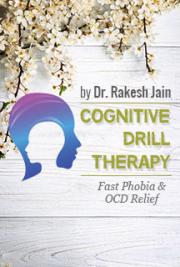Health insurance has made psychotherapy a practical possibility for many. Check
your policy (you may have to call the company for clarification) to answer three key
questions: Does insurance pay for outpatient mental health services? Which
therapists does it pay? How much does it pay?
Your policy may pay for psychotherapy but not hypnosis, biofeedback, or
relaxation, because these are considered "experimental techniques." (Often you'll be
reimbursed if these techniques are billed under the general heading
"psychotherapy.") It may pay for therapy performed by a psychiatrist or psychologist
but not a clinical social worker. It may insist that you be referred by a physician.
Most policies have a yearly or per-session limit on coverage, and some exclude
many problems as "preexisting conditions." If psychotherapy is not covered or
inadequately reimbursed and finances threaten to become a hardship, consider
therapy at a clinic or mental health center with a sliding scale based on your income.
Group therapy is less expensive and in some cases more useful than individual
sessions.
Find out more at http://www.grossbart.com
APPENDIX III
The Power of the Group
Groups have a fundamental power. They speak to our origins as primates, our
dependency on others as children, and our basic need for one another. Groups can
hurt or kill – they can also soothe and heal. If the thought of being in a group puts you
off, it likely means that you have suffered in one and may need a good group
experience all the more.
Groups formed for a specific purpose are a major resource. They come in so
many shapes, sizes, and types that it is hard to be an educated consumer. Let's look at
the options and consider which groups are most likely to give you what you need.
There are three main types of groups: psychotherapy groups, professionally led
support groups, and self-help/mutual help groups. All are briefly described below. I
have also included a nationwide listing of support groups for various types of skin
disorders in Appendix IV. Since local support group information changes so
frequently, I have provided only the national office addresses and telephone numbers
of the various organizations. You can contact them to obtain a current listing of local
support groups.
1.
Psychotherapy groups: These are much more than individual psychotherapy
with more people in the room. With one (or possibly two) mental health
professionals leading, these groups typically have four to twelve members and meet
once or more times a week. The group may begin and terminate at the same time for
everyone or continue indefinitely with members entering and exiting on their own
timetable. There are groups for all ages, for couples, and for all levels of psychological
health. Group members may have common or different therapy agendas and may
also be in individual psychotherapy.
Group therapy would be a tool to address the emotional issues under your skin
and other life issues more than the specific skin symptoms. If the whole idea of
working in a group is uncomfortable for you, that likely suggests you are a good
candidate for a group. While group treatment can focus on any issue, it has special
advantages for certain problems.
When someone has realized that old ways of acting are unhelpful, a place to
refine and practice new approaches that are not yet ready for "prime time" is helpful.
Group provides the safe testing or practice field. It offers a similar advantage to
someone who has been socially isolated. Do you find that situation after situation
does not work out as hoped? At first, you probably focused on the specifics, bad luck,
or a malevolent view of the universe. A common second step is, "It must be a least
partly something I'm doing, but what?" This question can be answered by looking at
Find out more at http://www.grossbart.com
past situations or seeing yourself do the same problem behavior with the therapist in
individual treatment. If not, group psychotherapy may be the best tool for the job.
Inevitably, the same problems will crop up, but you have a room full of people who
are committed to identifying and correcting the problem rather than simply playing
out the same game one more time.clxxix,clxxx
2.
Support groups: These groups are run by people with special training in the area
for people who share a common problem, issue, or goal. It might be a group for adult
children of alcoholics, parents of kids with disabilities, men with career crises, or
whatever. The eczema group in chapter 11 is another example.
Skin support groups are described in the medical literature at least as far back
as the 1940s. They usually focus on support per se and are affiliated with hospital
dermatology departments.
3.
Self-help or mutual help groups: The distinctive characteristics of these groups
may make them just what you are looking for. They are comparable to
neighborhoods or extended families; with no professional leader, their emphasis is
on the exchange of resources and knowledge. Every member must have experienced
the problem personally. (In addition to the group meetings, they may publish
newsletters and informational pamphlets and sponsor hot lines, activities and social
events, or educational seminars.) Alcoholics Anonymous (AA) is the best known of
these groups; some other groups follow its 12-step format. Skin groups do not
pattern themselves on AA.
Typical skin groups have a national organization providing written information,
research sponsorship, and lobbying for governmental support of research. The
mutual help group meetings are run locally. Some local groups also have newsletters,
hot lines, social events, or informational lectures.
I routinely refer people to all three types of groups. Try the following approach:
Research which of the three types of groups are available and affordable in your area.
Psychotherapy and support groups usually charge, but fees may be flexible and there
is a good chance your health insurance will be helpful. Mutual help groups are usually
free, sometimes with modest dues ($20 to $30) to join the national organization.
LEVEL OF COMMITMENT
At one end of the scale, a long-term psychotherapy group might require a three-
month weekly commitment. Most mutual help skin groups meet monthly and have
members coming and going. Support groups might follow either policy or be
somewhere in between. Whether required or not, think about how much time and
energy you are willing to devote. The old cliché may well apply that "you get out of
something what you put into it."
Quality and availability are probably more important than category. It is a rare
person who could not get a real benefit from a first-rate group of any of the three
types. Don't put a lot of energy into the nonexistent group that would be perfect for
you if only it was a real option. Shop and get references and recommendations.
Remember that a group can be a disappointment in some ways but still helpful in
others.
Find out more at http://www.grossbart.com
DO IT YOURSELF
If the right group isn't available, don't become discouraged. If you want a mutual help
group, start your own. The following organizations can provide useful literature on
the subject:
The Massachusetts Cooperative Extension
Robert Helgesen, Director
Boston, Massachusetts
It offers a publication entitled Starting a Mutual Help Group, originally published in
the spring of 1990 by:
The Massachusetts Clearinghouse of Mutual Help Groups
℅ Warren Schumacher, Division of Home Economics
113 Skinner Hall, University of Massachusetts
Amherst, MA 01003
American Self-Help Clearinghouse
Saint-Clares-Riverside Medical Center
25 Pocono Road, Denville, NT 07834 (201) 625-7101
It publishes The SelfHelp Sourcebook: Finding & Forming Mutual Aid SelfHelp Groups,
compiled and edited by Edward J. Madara and Abigail Meese.
If you want a professionally led group the same message still applies. Approach
a professional who you'd like to work with and make a proposal.
Appendix IV contains a listing of various skin support groups nationwide.
clxxix The American Group Psychotherapy Association, International Journal of Group Psychotherapy
(Madison, Wis: International Universities Press). A good general source, this is the official publication of the
American Group Psychotherapy Association.
clxxx I.D. Yalom, The Theory and Practice of Group Psychotherapy (New York: Basic Books, 1970).
Find out more at http://www.grossbart.com
APPENDIX IV
Support and Mutual Help Group Directory
Most groups have a national office to coordinate activities, such as fund raising,
producing educational materials, lobbying for research funding, sponsoring
conferences, and putting out a newsletter.
The local groups usually sponsor the group meetings and may also host social
events and provide informed individuals with the problems who are available to talk
with you.
Since local support group information changes so frequently, I have provided
only the national office addresses and telephone numbers of the various
organizations. You can contact them to obtain a current listing of groups available in
your area.
SUPPORT AND MUTUAL HELP GROUP DIRECTORY
Get the latest information about support and mutual help groups at:
http://grossbart.com/groups.html
Find out more at http://www.grossbart.com
Notes
I. The Story Behind Your Skin
1. Your Skin:
Sensing and Responding to the World Around You
Find out more at http://www.grossbart.com
Bibliography
American Group Psychotherapy Association, International Journal of Group
Psychotherapy (Madison, Wis: International Universities Press)
Andrews, H.F., "Helping and Health: the Relationship between Volunteer Activity and
Health-Related Outcomes," Advances, Institute for the Advancement of Health 7-1
(1990): 25-34.
Arndt, K.A., Manual of Dermatologic Therapeutics. 3d ed. Boston: Little Brown, 1983.
Auchor.K, ed., American Journal of Clinical Biofeedback. New York: Human Sciences
Press, periodical.
Aron-Brunetiere, R. Bellezza e Medicina. Milan, Italy: Sugar Co. (1976). (Quoted in
Ciorgini.)
Azrin, N.H. and Nunn, R.G. "Habit Reversal: A Method of Eliminating Nervous Habits
and Tics." Behavior Research andTherapy 11 (1973): 619.
____. "Hypnotherapy in a 22-Month-Old Girl with Molluscum Contagiousum." Minerva
Medica 79 (1981): 1213-1215.
Bahnson, C.B., and Bahnson, M.B. "Role of the Ego Defenses: Denial and Repression in
the Etiology of Malignant Neoplasm." Annals of the New York Academy of Science 123
(1966): 827-845.
Bartrop, R.W., et al. "Depressed Lymphocyte Function after Bereavement." The Lancet
1 (1977): 834-836.
Beare, J.M., et al. "The Effects of Mental and Physical Stress on the Incidence of Skin
Disorders." British Journal of Dermatology 98 (1978): 553-558.
Benoit, J., and E.H. Harrell. "Biofeedback and Control of Skin Cell Proliferation in
Psoriasis." Psychological Reports 46, 1980: 831-839.
Benson, H. The Relaxation Response. New York: Morrow, 1975.
Benson, H., and W. Proctor. Beyond the Relaxation Response: How to Harness the
Healing of Your Personal Beliefs. New York: Time, 1984.
____. Your Maximum Mind. New York: Random, 1987.
Blank, H., and M.W. Brody. "Recurrent Herpes Simplex." Psychosomatic Medicine 12
Find out more at http://www.grossbart.com
(1950): 254-260.
Bowers, K. Hypnosis for the Seriously Curious. Monterey, Calif.: Brooks-Cole, 1976.
Braughman, R.D. and R. Sobel. "Psoriasis: A Measure of Severity." Archives of
Dermatology 101 (1970): 390-393.
Bray, S. Personal communication (1983).
Bresler, D.E. Free Yourself from Pain. New York: Simon & Schuster, 1979.
Brown, B.W. "Treahnent of Acne Vulgaris by Biofeedback-Assisted Cue-Controlled
Relaxation and Guided Imagery." Dissertation Abstracts International 42(1981):
1163-B.
Brown, D.G., and F.R. Bettley. "Psychiatric Treatment of Eczema: A Controlled Trial."
British Medical Journal (June 26, 1971): 729-734.
Brown, D.G., and R.S. Kalucy. "Correlation of Neurophysiological and Personality Data
in Sleep Scratching." Proceedings of the Royal Society of Medicine 68(1975):20-22
Burns, D.D. Feeling Good: TheNew Mood Therapy. New York: Morrow, 1980.
Cataldo, M.F., et al. "Behavior Therapy Techniques in the Treahnent of Exfoliative
Dermatitis." Archives of Dermatology, 116 (1980): 919-922.
Chapman, L.F., et al. "Changes in Tissue Vulnerability During Hypnotic Suggestion."
Journal of Psychosomatic Research 4 (1959): 99-105
Cohen, I., and J.D. Lichtenberg. "Alopecia Areata." Archives of General Psychiatry 17
(1967): 608-614.
Cole, W.C., et al. "Group Psychotherapy as an Aid in the Medical Treatment of
Eczema." Journal of the American Academy of Dermatology 18, 2-1 (1988): 286-291.
Coles, R.B. "Group Treatment in the Skin Department." Transactions of the St. John's
Hospital Dermatologic Society 53-1 (1967): 82-85.
Conant, M.A. "Instances of Delusional Genital Herpes Reported." Clinical Psychiatry
News 10-5 (1982): 29.
Crasilneck, H.B., and J. A. Hall. Clinical Hypnosis Principles and Applications. New York:
Grone & Stratton, 1975.
Dane, J.R., and J.C. Rowlingson, "Hypnosis in the Management of Postherpetic
Neuralgia: Three Case Studies." American Journal of Clinical Hypnosis 31-2 (1988):
Find out more at http://www.grossbart.com
107-113.
Davis, D.B., and J.W. Bick. "Skin Reactions Observed Under War Time Stress." Journal
of Nervous and Mental Diseases 103 (1946): 503-508.
Deikman, A.J. "Deautomatization and the Mystical Experience," In Altered States of
Consciousness, edited by C.T. Tart. New York: Doubleday, 1969.
Di Bertolino, A.R. "Terapia Psicosomatica Dell'herpes Simplesx Recidivante," Minerva
Medica 72 1207-1212.
Duller, P., and W.D. Gentry. "Use of Biofeedback in Treating Chronic Hyperhidrosis: A
Preliminary Report "British Journal of Dermatology, 103 (1980): 143-146.
Edelson, R. L., and J. M. Fink. "The Immunologic Function of Skin." Scientific American
252-6 (1985): 44-53.
Eppley, S.R. "Relaxation and Visual Imagery: Treatment for Alopecia Areata." Ed.D.
diss., University of Cincinnati, 1986.
Epstein, E.S., et al. "Psychiatric Aspects of Beçhet's Syndrome." Journal of
Psychosomatic Research 14 (1970): 161-172.
Farber, E.M. and E.J. Van Scott."Psoriasis" in Dermatology in General Medicine, edited
by T.B. Fitzpatrick, et al. New York: McGraw-Hill, 1979, 233-247.
Fawzy, F.I., et al., "A Structured Psychiatric Intervention for Cancer Patients." Archives
of General Psychiatry 47 (August 1990):720-735.
Fitzpatrick, T.B. "Fundamentals of Dermatologic Diagnosis," Dermatology in General
Medicine. New York: McGraw-Hill, 1979.
Flugel, J. The Psychology of Clothes. New York: AMS, 1930.
Fraiberg, S. The Magic Years. New York: Scribner's, 1959.
Frankel, F.H. Hypnosis: Trance as a Coping Mechanism. New York: Plenum, 1976.
Frankel, F.H, and R.C. Misch. "Hypnosis in a Case of Long-Standing Psoriasis in a
Person with Character Problems," The International Journal of Clinical and
Experimental Hypnosis, 21-3 (1973): 121-130.
Frazier, C.A. Psychosomatic Aspects of Allergy. New York: VanNostrand, Reinhold,
1977.
Freud, S. "The Dynamics of Transference," in The Standard Edition of the Complete
Find out more at http://www.grossbart.com


CONTACT DR.
GROSSBART
I'm available to answer your questions.
You may want help finding a local therapist with
special skills, have reached an impasse, or just
want to let me know how it's going.
In addition to my Boston practice, I work by
telephone with people around the world. Working
together, it is quite likely we can get you the relief you've been hoping for.
Ted A. Grossbart. Ph.D.
Harvard Medical School
Email:
ted@grossbart.com
Web:
http://www.grossbart.com
Phone:
(617) 536-0480
BUY THE BOOK
Want to own a copy of Skin Deep? Buy the
paperback from Health Press.
Find out more at http://www.grossbart.com
Psychological Works of Sigmund Freud. London: Hogarth, 1953, 97-108.
_____. "The Interpretation of Dreams," in The Standard Edition of the Complete
Psychological Works of Sigmund Freud, Vols. 4-5, ed. and trans. J. Strachey. London:
Hogarth, 1953.
_____. "The Psychopathology of Everyday Life," in The Standard Edition of the
Psychological Works of Sigmund Freud, ed. and trans. J. Strachey. London: Hogarth,
1953.
Freudberg, F. Herpes: A Complete Guide to Relief and Reassurance. Philadephia:
Running Press, 1982.
Fromm, E., and R.E. Shor, eds. Hypnosis: Developments in Research and New
Perspectives. Hawthorne, N.Y.: Aldine de Gruyter, 1979.
Fulton, J.E., and E. Black. Dr. Fulton's Step-by-Step Program for Clearing Acne. New
York: Harper & Row, 1983.
Gajwani, A.K., and V.N. Sehgal. "Hypnosis: A New Therapeutic Approach in Vitiligo."
Cutis 14 (1974): 572-573.
Galski, T.J. "The Adjunctive Use of Hypnosisin the Treatment ofT richotillomania: A
Case Report." American Journal of Clinical Hypnosis 23-3 (1981):198-201.
Gardner, G.G., and K. Olness. Hypnosis and Hypnotherapy with Children. New York:
Grune, 1981.
Garfield, P. Creative Dreaming. New York: Ballantine, 1976.
Gillespie, O. Herpes: What to Do When You Have It. New York: Grosset and Dunlap,
1982.
Ginsburg, I.H., and B.G. Link. "Feelings of Stigmatization in Patients with Psoriasis."
Journal of the American Academy of Dermatology 20, 1 (1989).
Giorgini, S., and Melli, C. Aesthetics in Psychosomatic Dermatology: II (Skin Changes
Experienced as Cutaneous Disease). In Panconesi, E., "Stress and Skin Diseases:
Psychosomatic Dermatology." Clinics in Dermatology 2, 4 (October-December1984):
1-282.
Glaser, R., et al. "Stress, Loneliness and Changes in Herpes-Virus Latency." Journal of
Behavioral Medicine 8-3 (1985): 249-260.
Goleman, D. "The Chicken Soup Effect." Psychology Today (December 1982): 81-82.
Find out more at http://www.grossbart.com
Graham, D.T., and S. Wolf. "Pathogenesis of Urticaria." Journal of the American Medical
Association 143 (1950):1396-1402.
Creenson, R.R. The Technique and Practice of Psychoanalysis. New York: International
Universities Press, 1967.
Griesemer, R.D. "Emotionally Triggered Disease in a Dermatological Practice"
Psychiatric Annals 8, 8 (1978): 49-56.
Griesemer, R.D., and T. Nadelson. "E









